
Model of technological transformation
Three years after the groundbreaking ceremony, Long Thanh airport has become a typical image of a large national construction site. As of April 2025, many packages have reached 40 - 50% of the volume. According to the Ministry of Construction , as of April 2025, the main items at Long Thanh are following the adjusted progress: Two 4,000m long runways are constructing the foundation and main structure; The passenger terminal has completed the entire foundation, and the steel structure is being installed; The connecting traffic system, overpasses, technical tunnels, and regulating lakes have reached 60 - 80% of the volume; Packages 4.9 (fuel), 4.7 (parking), and 4.8 (internal port) are being implemented in parallel.
Long Thanh is not only a major construction site for transport infrastructure but also a symbol of technological transformation in the Vietnamese aviation industry. With the orientation of becoming a regional transit hub, this super airport is posing an urgent requirement: preparing a new generation of high-quality human resources, good at expertise, proficient in technology, foreign languages and international standard working mindset.
|
At the Long Thanh construction site, there are thousands of local workers receiving short-term training, changing jobs from agricultural production to infrastructure construction. |
Long Thanh not only needs engineers and construction workers, but also a large team operating automation systems, artificial intelligence (AI), big data, sensors (IoT), RFID... in all processes from flight coordination, security control to baggage handling, logistics, terminal operations and energy management.
Prime Minister Pham Minh Chinh directed during a field inspection of Long Thanh in March 2025: "Not only is fast progress needed, but also human quality is needed commensurate with the scale of the project."
Therefore, Long Thanh airport needs to become the core of a regional training cluster for aviation, logistics, services and operational technology. This cluster needs to link universities specializing in engineering, logistics and information technology in Ho Chi Minh City and Binh Duong; vocational academies and colleges in Dong Nai and Ba Ria - Vung Tau; research and experimental centers sponsored by enterprises; and an international cooperation network for aviation vocational certification and inspection.
Long Thanh Airport is a symbol of a modern, integrated Vietnam. But to operate effectively, a new generation of human resources is needed that is not only good at theory but also proficient in technology, disciplined in work, has an integrated mindset and is committed to the long term.
Long Thanh is the starting point of a new transformation chain and for this chain to operate smoothly, the human factor must be placed on par with the infrastructure. A modern airport not only has a magnificent terminal, a long runway or a state-of-the-art radar system, but also must have a team of qualified people to operate and master; contributing to helping Vietnam take off in the new era.
According to the Ministry of Construction, in the first phase of operation (2026 - 2030) alone, Long Thanh will need at least 25,000 direct personnel for positions such as: ground staff, air traffic controllers, system engineers, information technology experts, maintenance technicians, logistics staff, passenger service specialists, etc.
In addition, there is an indirect workforce in the accompanying service industries: catering, retail, cold storage logistics, freight transport, trade and finance, airport services. It is expected that the entire Long Thanh airport ecosystem can create more than 200,000 direct and indirect jobs.
According to experts from the Vietnam Logistics Association (VLA), the standard training period for a technician or operator to be proficient in an international airport environment is 2-3 years. Therefore, the allocation, recruitment and implementation of personnel training for Long Thanh needs a clear strategy at the national level. It is necessary to build a national strategy to develop human resources for aviation, logistics and modern airport operations.
The strategy needs to have the following pillars: Building a national training center cluster located in the vicinity of Long Thanh, connecting with Ho Chi Minh City, Binh Duong, Ba Ria - Vung Tau; applying the national vocational competency framework, standardizing certificates and assessments according to ICAO and ISO standards; strengthening the cooperation model "School - Enterprise - State - International"; supporting scholarships, preferential training credits and internship programs, and exposure at major airports such as Noi Bai, Tan Son Nhat, Cam Ranh; prioritizing career conversion for unskilled workers, especially those whose land has been recovered or young people in localities around Long Thanh.
It is also possible to consider the option of building a “Long Thanh Aviation Technology and Training Zone” which is an integrated complex of schools, practical training centers, simulation rooms, dormitories and on-site recruitment floors. This model can operate in the form of public-private partnerships (PPP), mobilizing social capital and flexible management.
A shift in planning thinking
In many recent inspections, Deputy Prime Minister Tran Hong Ha emphasized: "Long Thanh's progress must not be allowed to slip off track, it must reach the finish line on time, with quality and goals."
|
One of the problems that still exists today is the separation of responsibilities between levels. While the Central Government is in charge of airport construction, localities are responsible for site clearance and infrastructure deployment. However, the coordination and decentralization mechanism is not really synchronous, leading to the handling of problems sometimes taking time, affecting the overall progress. From that reality, a proposal was made to establish the Long Thanh Airport Regional Development Coordination Board, a specialized agency with the authority to coordinate planning, allocate resources, monitor progress and handle inter-regional problems. This could be a pilot model for the regional mechanism, helping the Central Government to delegate actual authority while localities comply with a unified action plan.
Long Thanh is not only a symbol of infrastructure development. It is a test of the ability to manage mega-projects in the context of economic integration and transparent governance requirements. Experience from Long Thanh airport shows that large-scale projects cannot operate effectively if they still follow a decentralized administrative model.
If the regional coordination model is successfully established, Long Thanh will be a precedent for other projects such as the North-South Expressway, Can Gio International Transit Port, Cai Mep Ha Free Trade Zone... And Long Thanh will not only be a super airport, but also become a symbol where speed, transparency and governance capacity converge.
More importantly, Long Thanh will mark a shift in planning thinking, from local to regional thinking, from administrative management to integrated coordination. If successful, this model will open up a new institutional framework for national infrastructure projects, helping to shorten implementation time, reduce waste and increase resource efficiency.
The Government has assigned the Ministry of Construction to coordinate with the People's Committee of Dong Nai province to develop a master plan for the coordination of the area surrounding Long Thanh airport. This is the basis for institutionalizing binding mechanisms, sharing resources, integrating planning and building a legal corridor for the "airport area" development model.
|
As of April 2025, many packages have reached 50% of the volume. (Photo in article: Duy Khuong) |
The problem is not a lack of capital, technology or labor, but rather the ability to organize and design appropriate regulations. Many opinions say that from the large construction site to the exemplary governance model, Long Thanh is a miniature image of the transformation journey of a country reaching out to the world with speed, transparency and integration aspirations.
With a total investment of more than 109,000 billion VND for phase 1, Long Thanh is one of the largest public investment projects in history. Monitoring progress, quality and costs cannot be without the role of independent inspection and auditing agencies and public opinion. A proposed solution is to apply a digital platform to update progress in real time, publicize project data on the electronic information portal, and expand the supervisory role from elected representatives, the press to social organizations. Experience from large projects such as the Hanoi metro and the North-South expressway shows that where there is good social supervision, violations are minimized and investment efficiency is improved.
As of the first quarter of 2025, at the Long Thanh construction site, there are thousands of local workers who have received short-term training, switching from agricultural production to infrastructure construction. This conversion not only helps solve the problem of social security after land acquisition, but also creates a human resource foundation for future airport operations. The "training - conversion - practical application" model in Long Thanh shows the great potential of the rural labor force if they have access to technology, proper guidance and promotion opportunities. In addition, organizing training programs on soft skills, labor safety, basic foreign languages and customer communication skills for the current construction workers is also an important foundation. Those who have participated in airport construction can be given priority for retraining to participate in airport operations in the next phase.
Duy Khuong - baophapluat.vn
Source: https://baophapluat.vn/san-bay-long-thanh-bieu-tuong-moi-cua-nang-luc-viet-nam-bai-cuoi-hinh-anh-thu-nho-ve-hanh-trinh-chuyen-minh-cua-mot-quoc-gia-post546295.html







![[Photo] Closing of the 1st Congress of Party Delegates of Central Party Agencies](https://vphoto.vietnam.vn/thumb/1200x675/vietnam/resource/IMAGE/2025/9/24/b419f67738854f85bad6dbefa40f3040)





![[Photo] Closing of the 1st Congress of Party Delegates of Central Party Agencies](https://vphoto.vietnam.vn/thumb/402x226/vietnam/resource/IMAGE/2025/9/24/b419f67738854f85bad6dbefa40f3040)







![[Photo] Prime Minister Pham Minh Chinh chairs the 14th meeting of the Steering Committee on IUU](https://vphoto.vietnam.vn/thumb/402x226/vietnam/resource/IMAGE/2025/9/23/a5244e94b6dd49b3b52bbb92201c6986)

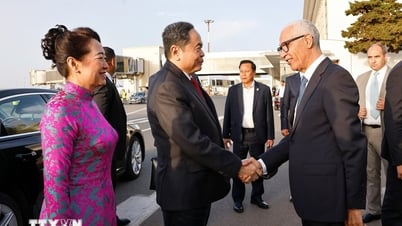

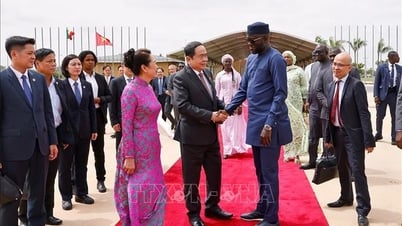


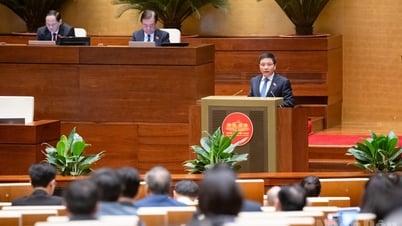
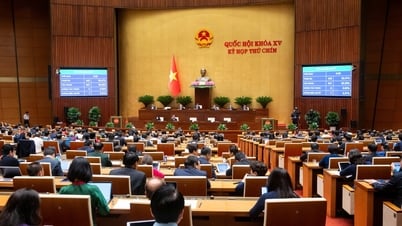











![[Photo] Editor-in-Chief of Nhan Dan Newspaper Le Quoc Minh received the working delegation of Pasaxon Newspaper](https://vphoto.vietnam.vn/thumb/1200x675/vietnam/resource/IMAGE/2025/9/23/da79369d8d2849318c3fe8e792f4ce16)

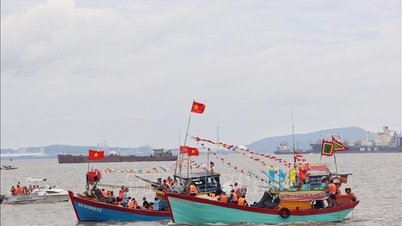



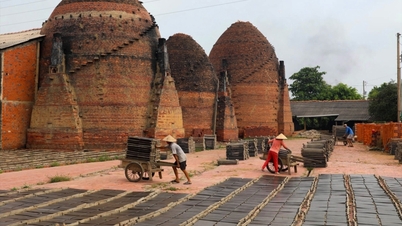






















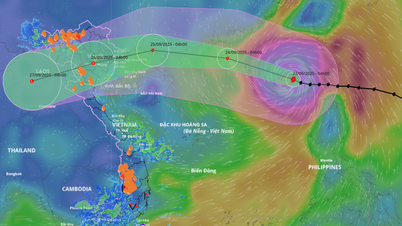




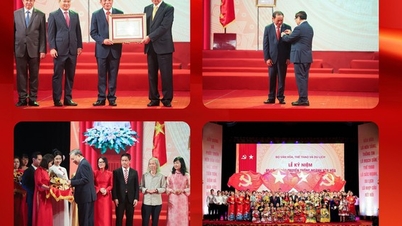


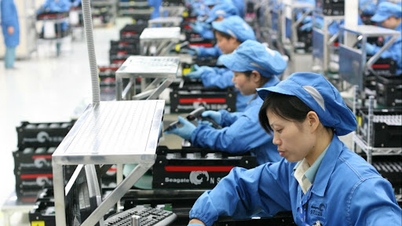

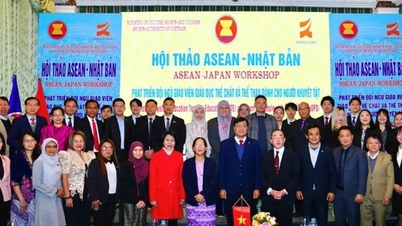
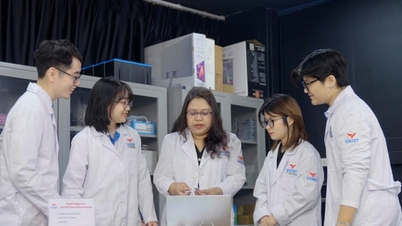




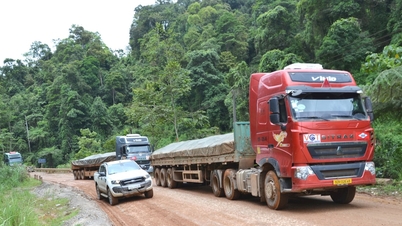






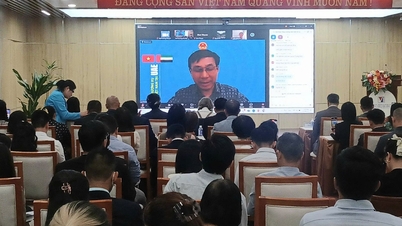



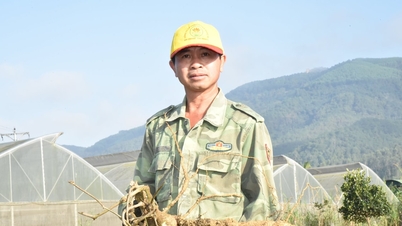








Comment (0)